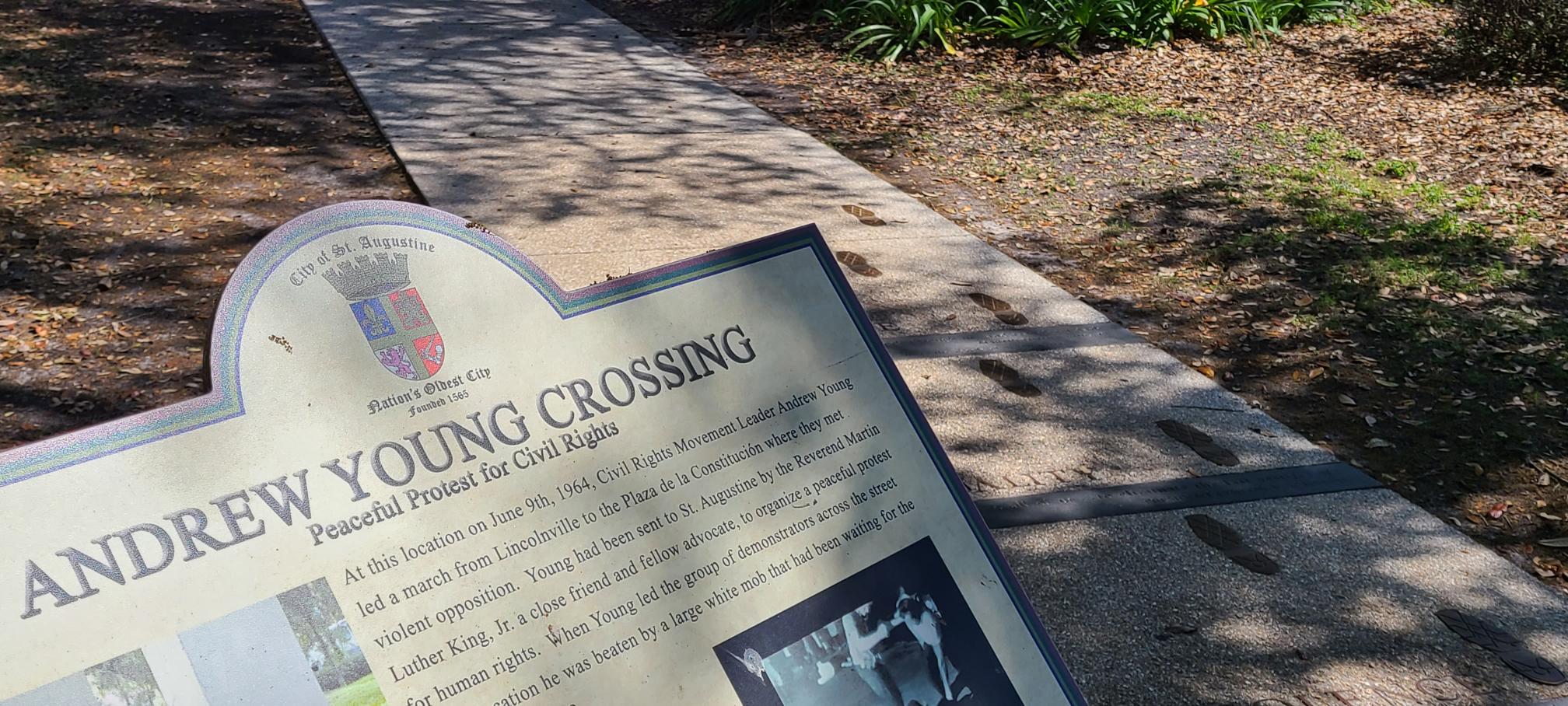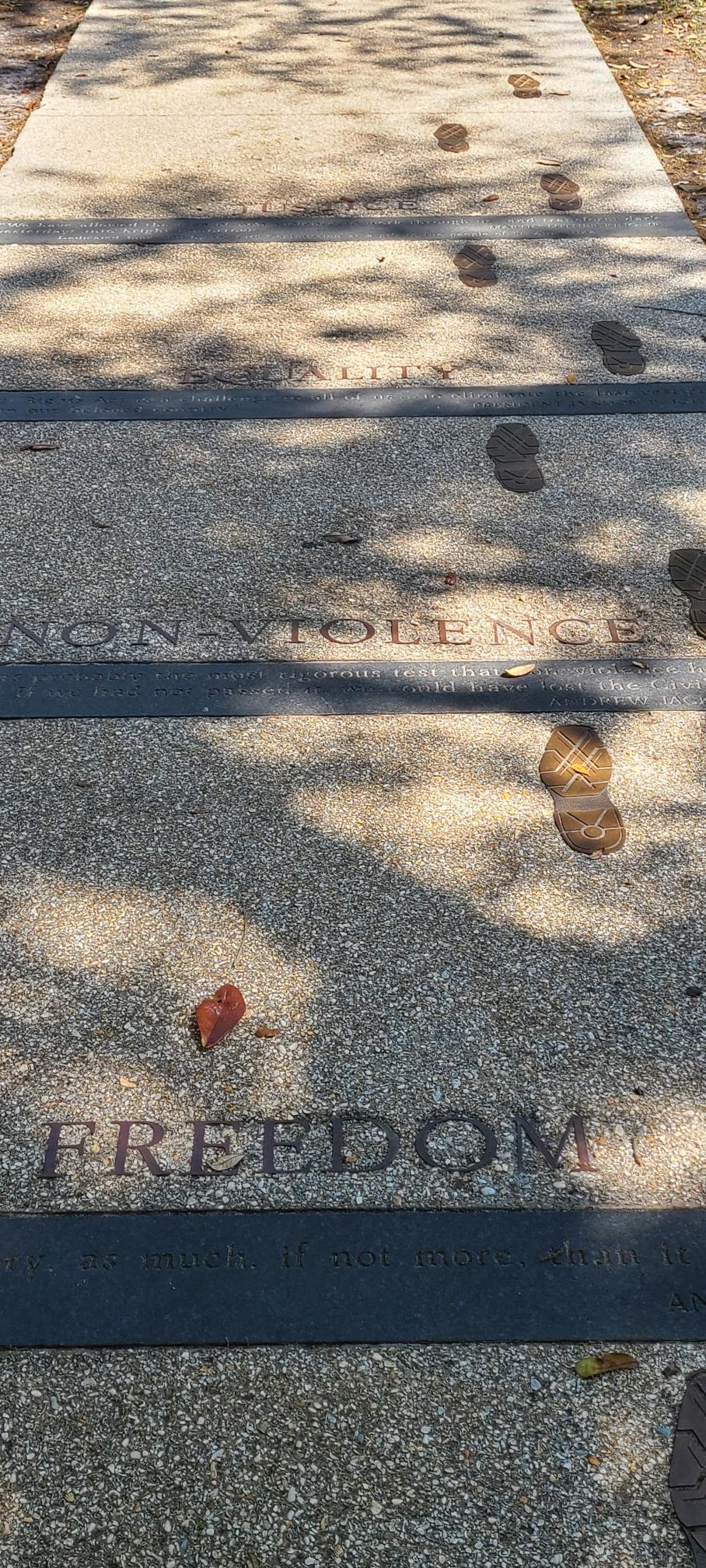St. Augustine, Florida is over 450 years old but one of its most famous historic sites commemorates an event that happened only 58 years ago. In June 1964, Andrew Young, who would later become Mayor of Atlanta and a U.S. Secretary of State, led a peaceful protest in the town and was met by a violent mob.

Secretary Young, only 32 at the time, had been dispatched to Florida’s oldest city by Dr. Martin Luther King, Jr. to help quell race riots in the city but was instead the subject of violence himself and was knocked unconscious. The location of this conflict is now named Andrew Young Crossing and features a series of bronze footprints on a sidewalk accompanied by quotes from Andrew Young as well by Dr. King and President Lyndon Johnson. Less than a month later, on July 2, Johnson signed the Civil Rights Act.
At 457, St. Augustine is the longest continually-inhabited European-founded city in the United States, and last month the city commemorated its many years with the St. Augustine History Festival. Part of the city’s heritage is its work to address racial issues by acknowledging the role the city has played in the civil war as well as the civil rights movement. While many cities are debating the removal of civil war monuments, St. Augustine has taken further action by highlighting the places where racial healing and civil rights progress have been made.
 In 2020, St. Augustine removed a confederate monument of its own, but rather than attempting to remove or destroy it overnight, the city chose instead to dismantle the monument and move it to private property where it can still be viewed and understood as a part of history without being in a public place that glorifies the pain caused by the civil war.
In 2020, St. Augustine removed a confederate monument of its own, but rather than attempting to remove or destroy it overnight, the city chose instead to dismantle the monument and move it to private property where it can still be viewed and understood as a part of history without being in a public place that glorifies the pain caused by the civil war.
Last month’s history festival showcased the city’s long and storied past through 21 special events. Two of the many festival sites highlighted the city’s history in the civil rights movement. The first was the Fort Mose State Park and Historical Museum, which marks the site of the first legally sanctioned free African settlement in what is now the U.S. In 1738 an estimated one hundred Africans settled in Fort Mose, using it as a sanctuary to escape enslavement. The second such site is the Lincolnville Museum and Cultural Center, which displays original items from the civil rights movement and highlights over 450 years of Black history so that residents can get a sense of how the city’s history and the history of its Black residents are intertwined.
Learn more about St. Augustine and its history and cultural attractions.



